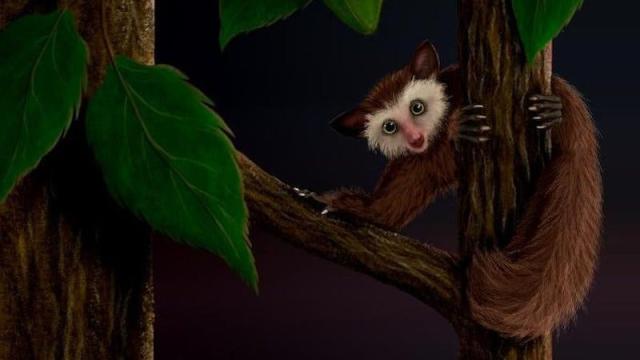You may think Nebraska and China have little in common, but the two places definitely share one ancient similarity: the presence of a 30-million-year-old primate lineage which headed to North America millions of years before modern human ancestors would evolve.
The lineage emerged in North America millions of years after the apparent extinction of all other known primates on the continent, making the taxon a “Lazarus” species—one that crops up after its presumed extinction. Modern Lazarus taxa include the New Guinea singing dog (rediscovered in the wild in 2018 after going unseen for 50 years) and the black-browed babbler, spotted in October 2020 after 170 years of being presumed extinct. Lazarus taxa are named for the biblical Lazarus, who was resurrected by Jesus in the New Testament.
Unlike modern Lazarus species, which generally reappear after at most a couple centuries of presumed extinction, Ekgmowechashala philotau appeared in the fossil record millions of years after the other North American primates. 30-million-year-old teeth and jawbones of two species of the animal, as well as a sister taxa from China named Palaeohodites naduensis, recently revealed the origins of the North American mammal. The team’s research was published today in the Journal of Human Evolution.
“Our analysis dispels the idea that Ekgmowechashala is a relic or survivor of earlier primates in North America,” said Kathleen Rust, a paleontologist at the University of Kansas’ Biodiversity Institute and Natural History Museum and the study’s lead author, in a university release. “Instead, it was an immigrant species that evolved in Asia and migrated to North America during a surprisingly cool period, most likely via Beringia.”
“Several million years later Ekgmowechashala shows up like a drifting gunslinger in a Western movie, only to be a flash in the pan as far as the long trajectory of evolution is concerned,” said Chris Beard, a vertebrate paleontologist at the University of Kansas and co-author of the study, in the same release. “After Ekgmowechashala is gone for more than 25 million years, [modern humans] come to North America, marking the third chapter of primates on this continent.”
The notion that Ekgmowechashala, a primate whose name comes from a Sioux word for “monkey” as reported by Science News, migrated to North America via a land bridge has been around for some time. In 2015, a different team comparing Ekgmowechashala remains from Oregon to fossils from South Dakota and Nebraska suggested that the animal came from Asia and only arrived in America during the Oligocene Epoch some 29 million years ago. But the recent research team was able to establish a close phylogenetic relationship (i.e. the evolutionary history and connections between species) between Ekgmowechashala and the Asian primate species Palaeohodites naduensis, confirming the North American Lazarus taxon’s origins.
The fossils of Palaeohodites naduensis—whose genus name comes from the Greek words for “ancient” and “wanderer”—were found in 1995 near the village of Quelin in southern China. In the new paper, the researchers compared P. naduensis’ teeth with those of Ekgmowechashala. Based on the remarkable similarities between their teeth and jaw bones, the team determined that the two animals are sister taxa, the closest relatives of one another in their phylogenetic tree.
“When we were working there, we had absolutely no idea that we would find an animal that was closely related to this bizarre primate from North America, but literally as soon as I picked up the jaw and saw it, I thought, ‘Wow, this is it,’” Beard said. “Here in KU’s collection, we have some critical fossils, including what is still by far the best upper molar of Ekgmowechashala known from North America. That upper molar is so distinctive and looks quite similar to the one from China that we found that it kind of seals the deal.”
The cooling and drying of North America that forced other primate species from the continent is very different from the warming world we inhabit today. But Ekgmowechashala’s story is a reminder that some life finds a way, even if many other forms of it do not.
